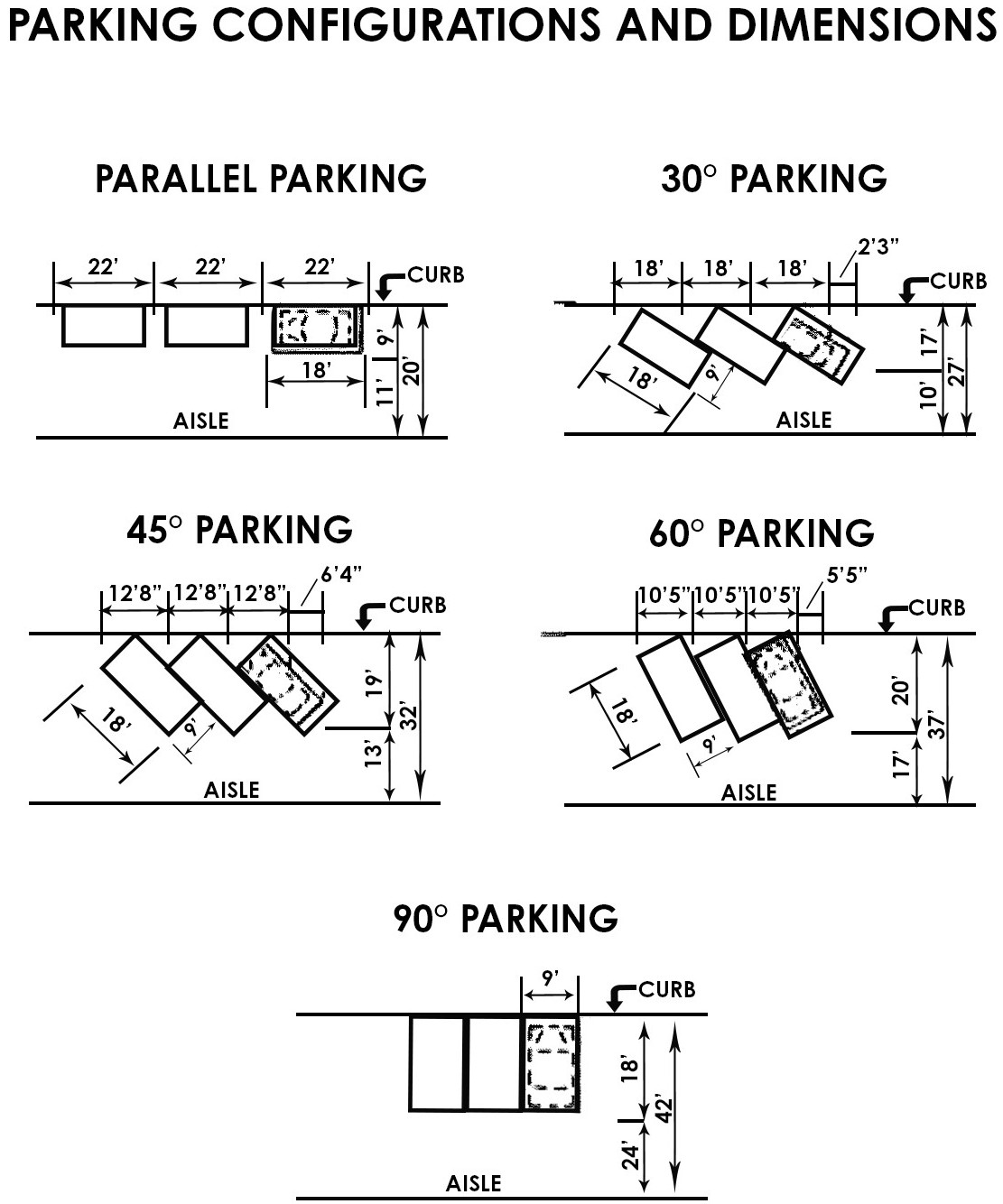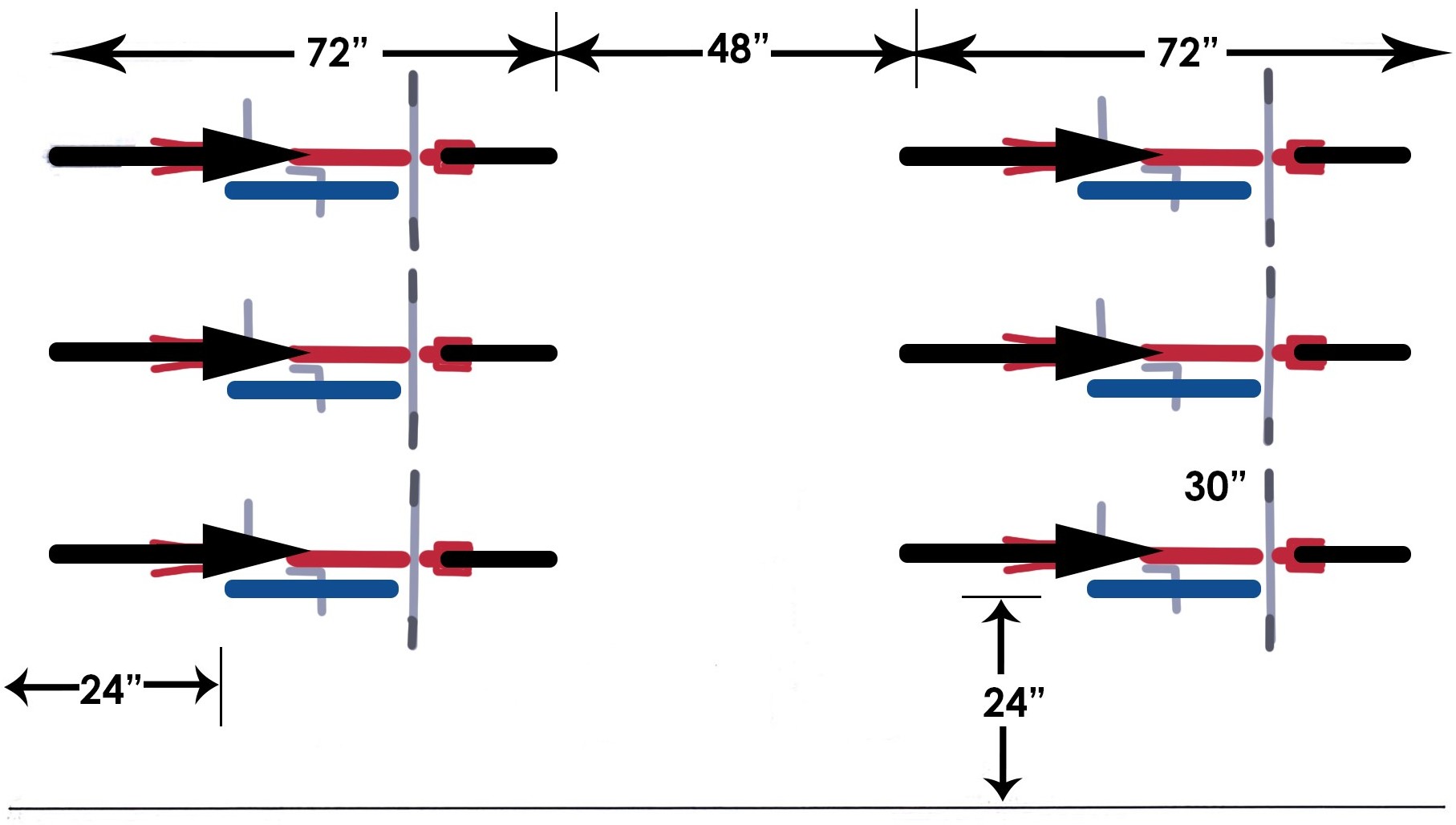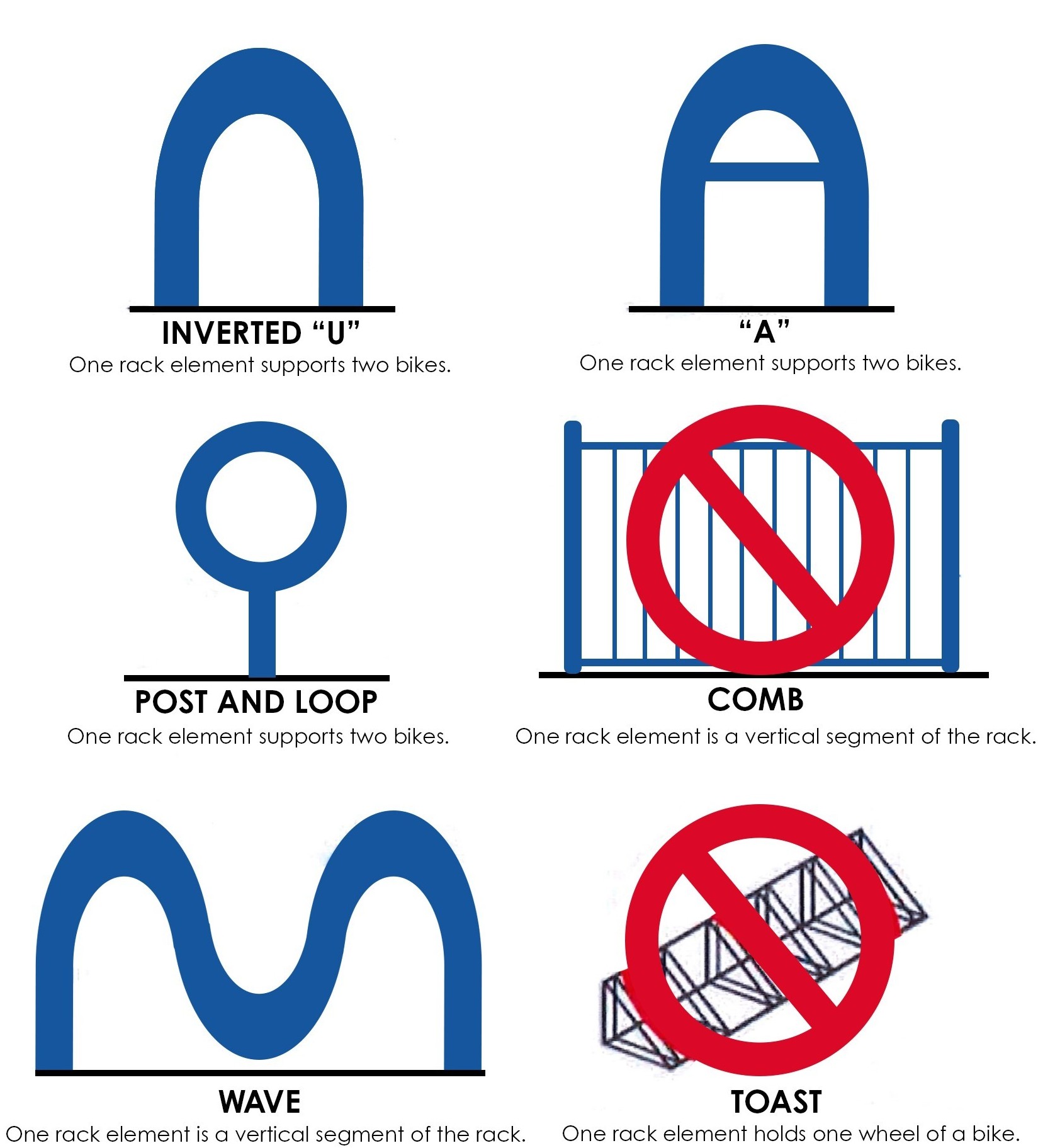18.240.020 Off-street parking requirements.
(a) General Requirements. The following requirements shall govern in the design, location and number of off-street parking and stacking spaces:
(1) Computation. When determination of the number of off-street parking and stacking spaces results in a requirement of a fractional space, the fraction of one-half or less may be disregarded, and a fraction in excess of one-half shall be counted as one space.
(2) Utilization. Off-street parking and stacking facilities provided for the uses hereinafter listed shall be reserved exclusively for the parking of bicycles and motor vehicles, in operating condition, of patrons, occupants, visitors or employees of such uses.
(3) Computing Off-Street Parking. In computing the floor area to determine the requirement for off-street parking, such computations for a structure shall exclude:
(i) The exterior wall width of the structure;
(ii) Elevator shafts;
(iii) Common courts or lobby areas;
(iv) Mechanical equipment rooms;
(v) Stairways;
(vi) Restrooms;
(vii) Basements, except those portions not used exclusively for service to the structure;
(viii) Balconies;
(ix) Incidental storage areas including but not limited to janitorial rooms, supply rooms, etc.
The Building Official shall determine the net floor area of the structure and shall require off-street parking as specified for the use set forth in the applicable district regulations.
(4) Shared Parking Provisions. In the case of mixed uses, the off-street parking and stacking spaces required shall equal the sum of the requirements of the various uses computed separately, provided all regulations governing the location of accessory off-street parking and stacking spaces in relation to the uses served are adhered to.
(b) Specific Requirements.
(1) Open and Enclosed Parking. Accessory off-street parking and stacking spaces may be open to the sky or enclosed within a garage.
(2) Surfacing. All off-street parking and stacking spaces, aisles and drives shall be surfaced in accordance with the standards and specifications of the City or County.
(3) Location. Off-street parking and stacking spaces, aisles and drives shall be located as follows:
(i) General.
(A) Bicycle parking, off-street parking and stacking spaces, aisles and drives shall be located on the same zoning lot as the use served.
(B) Protective curbs shall be required to be installed three feet from public sidewalks to protect pedestrians a minimum of two feet from adjacent property lines, and at other places on the parking lot as may be required by the Code Enforcement Director or the City Engineer to protect the adjacent property.
(C) Aisles and drives shall not be considered in determining whether off-street parking and stacking requirements have been met except in the instance of single-family dwellings and duplexes.
(ii) Bicycle Parking. Bicycle parking shall be located in designated areas which minimize pedestrian and vehicle conflict. Bicycle parking shall be located within 120 feet of a main building entrance in an area that is visible and well lighted. “Well lighted” means a brightness level of at least one foot-candle. Where multiple buildings exist, bicycle parking shall be distributed in a manner that serves all of the buildings in areas that are visible and well lighted.
(4) Design. Except for single-family dwellings and duplexes, all bicycle parking, off-street parking, and stacking spaces, aisles and drives shall comply with the following prescribed standards:
(i) Area. Vehicular parking and stacking spaces shall comply with the minimum dimensions illustrated in Figure 1.
(ii) Access.
(A) Vehicular. Each vehicular parking space shall open directly upon an aisle of such width and design as illustrated in Figure 1. The greatest aisle width shown in Figure 1 shall be provided when combining different parking space configurations on the same aisle. All off-street parking facilities shall be designed with appropriate means of vehicular access to a street or alley in a manner which will least interfere with traffic movement; and all such points of access must be approved by the Public Works Department. Aisles designed for two-way traffic shall have a minimum width of 24 feet.
(B) Bicycle. Each bicycle parking space shall comply with the minimum dimensions as illustrated in Figure 2.
(iii) Exiting a Parking Facility. No off-street parking facility shall be designed in such a manner that when exiting a parking facility it would require backing into a public street.
(iv) Curbing. Protective curbing shall be installed a minimum of three feet from a public sidewalk and two feet from adjacent property lines.
(v) Markings. The parking spaces in all off-street parking areas shall be visibly delineated on the surface by painted or marked stripes.
(vi) Bicycle Rack Design. Examples of approved bicycle racks are illustrated in Figure 3. Bicycle parking racks shall meet all of the following requirements:
(A) Located on paved, impervious, or approved pervious surfaces and securely anchored to the ground;
(B) Support the bicycle in at least two places;
(C) Enable the frame and at least one wheel to be secured; and
(D) Installed according to the manufacturer’s specifications.
(vii) Public Right-of-Way. Bicycle racks may be installed on public rights-of-way where there are no setbacks and the Public Works Director has determined that interference with pedestrian traffic is minimal.
(5) Screening. All open, off-street parking facilities containing eight or more parking spaces shall be effectively screened on each side adjoining residential property (including single-family, duplex and multiple-family) or institutional property with a continuous, view-reducing wood fence, masonry wall, compact evergreen hedge or other landscape screening material which, when planted, will constitute an immediate view-reducing barrier. Such view-reducing screen shall be at least four feet but not more than eight feet in height. The requirement for screening may be waived with written approval from the adjacent property owner.
(6) Lighting. Any lighting used to illuminate off-street parking facilities shall be directed away from residential properties and public streets in such a way as not to create a nuisance. However, in no case shall such lighting exceed three foot-candles measured at the lot line.
(7) Drainage. All stormwater runoff shall be collected, transported and disposed of in a manner as approved by the City Engineer.
(8) Accessible Parking. Where a use is required to provide accessibility for persons with disabilities, the required parking spaces shall be located and designed in accordance with standards as set by the Americans with Disabilities Act (ADA).
(9) Bicycle Parking. New off-street parking constructed after June 1, 2014, shall include additional parking for bicycles. The additional parking area shall be equivalent to five percent of the number of vehicular parking spaces required in TMC 18.240.030, with a minimum of two. Parking facilities that are expanded after June 1, 2014, shall include additional parking for bicycles in the expanded area that is equal to five percent of the number of vehicular parking spaces required in TMC 18.240.030 in the expanded area, with a minimum of two.
(10) Modification of Parking Requirements.
(i) Reduction of Parking Spaces. Where it can be demonstrated by the property owner that a specific use has such characteristics that the number of parking or stacking spaces required is too restrictive, the Planning Director may, upon request, grant up to a 25 percent reduction in the number of required spaces. Such request shall be filed with the Planning Director on forms as may be provided. Should a reduction greater than 25 percent be requested, the applicant may request a variance from the Board of Zoning Appeals in accordance with the procedures set forth in Chapter 2.220 TMC. Where a reduction of 25 percent or less is requested, the applicant shall be required to reserve an area of land on the site of the use served equal in size to the area of land needed to provide the spaces for which a reduction is granted. Such land reserved shall be suitable for development of a parking facility and conform with the parking requirements.
(ii) Bicycle Parking Substitution. In addition to the bicycle parking required in subsection (b)(9) of this section, up to 10 percent of the number of vehicular parking spaces required in TMC 18.240.030 may be substituted with bicycle parking.
(11) Condition of Off-Street Parking Facility. Any parking facility which does not meet the standards of this division and which shall create a nuisance to the public from any cause shall meet the requirements as recommended by the City or County Traffic Engineer, City or County Engineer, Planning Director and City or County Building Official, pertaining to screening, surfacing or entrances or exits.
FIGURE 1

FIGURE 2

FIGURE 3

(Ord. 19904 § 2, 5-13-14.)